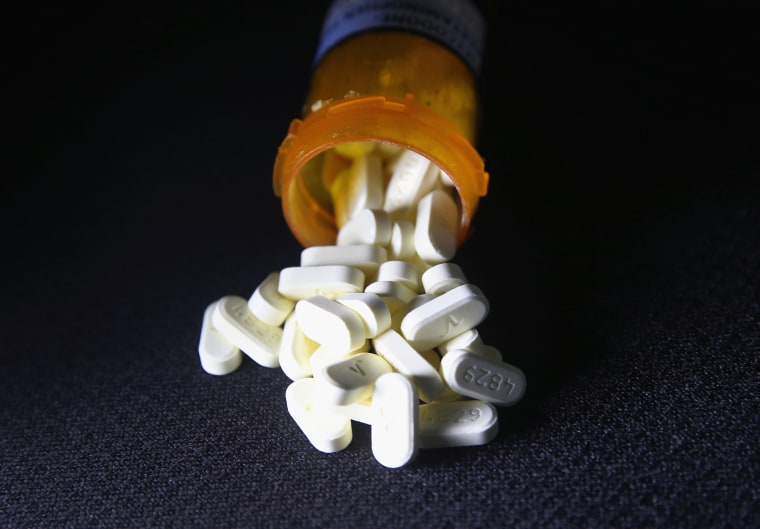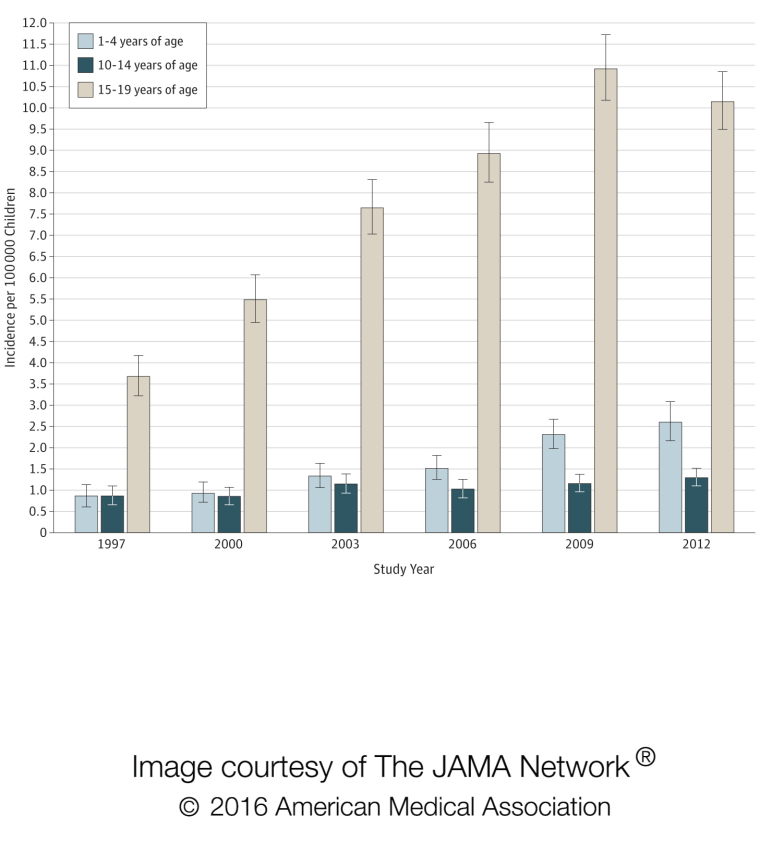More U.S. children are showing up in hospitals from overdoses of opioids, researchers from the Yale School of Medicine reported Monday.
They found the number of kids who received emergency treatment for a drug overdose more than doubled between 1997 and 2012.

Some overdoses are accidental, such as when kids find opioids in a medicine cabinet or on a countertop, and sometimes the drugs are taken on purpose.
“During the course of 16 years, hospitalizations attributed to opioid poisonings rose nearly two-fold in the pediatric population,” Julie Gaither and colleagues at the Yale School of Medicine wrote in their report, published in the Journal of the American Medical Association’s JAMA Pediatrics.
Related: FDA Approves Oxycontin for Kids as Young as 11
"We were surprised to find that the greatest increase over time (was) among the youngest children, those 1 to 4 years in age," Gaither said.
The team decided to do the study because of the opioid crisis among adults.
“Poisonings attributed to prescription drugs are now the leading cause of injury-related mortality in the United States; this epidemic is driven by the increased use of opioid analgesics to treat chronic pain,” they wrote.
So they looked at hospital records about kids admitted to emergency rooms.
“From 1997 to 2012, a total of 13,052 hospitalizations for prescription opioid poisonings were identified,” they reported.
"This epidemic is driven by the increased use of opioid analgesics to treat chronic pain."
“The annual incidence of hospitalizations for opioid poisonings per 100,000 children aged 1 to 19 years rose from 1.40 to 3.71, an increase of 165 percent.”
Related: Here's How Drugmakers Fought State Opioid Limits
The Centers for Disease Control and Prevention says opioid overdoses have hit record highs in the United States. The drugs killed more than 47,000 people in 2014 — more than the 32,000 who died in road accidents
“Even in children younger than 6 years, opioids, followed closely by benzodiazepines, now account for most of the drug poisonings in this age group; in nearly all these poisonings, the child was exposed to a prescription intended for an adult in the household,” Gaither’s team wrote.
Most were accidental poisonings. “The incidence of poisonings attributed to accidental intent increased by 82 percent from 0.17 in 1997 to 0.31 in 2012,” the team wrote.
“In teens ages 15 to 19, opioid poisonings attributed to suicide or self-inflicted injury increased by 140 percent, while those attributed to accidental intent increased 303 percent in this age group.”

And they uncovered a troubling new pattern — abuse of methadone, which is prescribed to help people overcome addiction to heroin and other opiates.
Related: Obama Seeks $1 Billion to Fight Drug Abuse
“Notably, we found that the incidence of hospitalizations for methadone poisonings increased 950 percent among 15- to 19-year-olds from 1997 to 2012,” the team wrote. That's almost 10-fold in 20 years, Gaither pointed out.
“Methadone is among the most misused of prescription drugs and is commonly diverted for illicit (non-medical) purposes, such as getting high or to enhance the effects of alcohol or other drugs," her team wrote.
“During the course of 16 years, hospitalizations attributed to opioid poisonings rose nearly two-fold in the pediatric population."
There was some good news. The data indicate that methadone abuse may be slowing, and doctors may be prescribing fewer opioid drugs overall. The CDC issued new voluntary guidelines in May urging doctors to take it easy in prescribing the potentially killer drugs.
“Our research, however, suggests that poisonings by prescription and illicit opioids are likely to remain a persistent and growing problem in the young unless greater attention is directed toward the pediatric community, who make up nearly one-quarter of the U.S. population,” Gaither’s team wrote.
The researchers offered up solutions: Keep these drugs away from kids, with better packaging, stronger rules and better education of parents and doctors alike.
“A combination of public health interventions (eg, parental education), policy initiatives, and consumer product regulations is needed to reduce pediatric exposure to opioids,” they wrote. “Finally, for clinicians who treat acute and chronic pain in children, national clinical practice guidelines for opioid prescribing that include pediatric-specific recommendations are urgently needed.”
